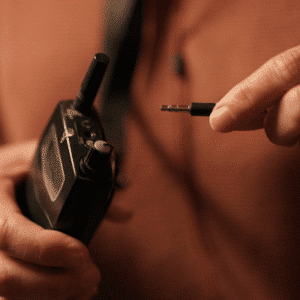2024 Space Industry Highlights: Global Milestones and Australia’s Rising Star
Outback Astronomy
- Published on

As we approach the end of 2024, the space industry has witnessed remarkable advancements and milestones, like SpaceX’s Starship test flights. At Outback Astronomy in Broken Hill, we believe in keeping our community informed about the cosmos and the endeavours that bring us closer to it.
Here’s an overview of the year’s most significant developments (in our view) in the global and Australian space sectors.
Global Space Industry Highlights
- SpaceX’s Monumental Achievements
- Starship Developments: The company has been actively working on its Starship program, aiming for rapid increases in launch rates. President Gwynne Shotwell emphasised the need for regulatory adaptations to accommodate the company’s ambitious launch schedules. During October 2024, SpaceX completed the groundbreaking engineering feat of capturing its gigantic Starship rocket booster with mechanical arms, or “chopsticks” . The Starship rocket also successfully returned to earth, splashing down in a designated Indian Ocean zone.
- Valuation Surge: SpaceX, under Elon Musk’s leadership, has seen its valuation soar to approximately $350 billion, (US dollars), marking a 67% increase from mid-2024. This growth is attributed to its reusable rocket technology and the expansion of the Starlink internet service, which now boasts over 4 million subscribers.
- Leadership Changes at NASA
- New Administrator: President Donald Trump nominated Jared Isaacman, a private astronaut and CEO of Shift4 Payments, as the new head of NASA. Isaacman aims to advance a commercial space economy, though he is expected to face political challenges balancing privatised human spaceflight with traditional NASA programmes.
- International Lunar Exploration Efforts
- Japan’s Lunar Mining Initiatives: Japan has entered the lunar mining sector through partnerships with ispace and Magna Petra, focusing on extracting Helium-3—a potential future energy source—from the Moon’s regolith. This move positions Japan alongside the USA and China in the competitive lunar resource race. Read about helium-3 here.
- China’s Space Missions: China continues to advance its space exploration programmes, including the launch of the Einstein Probe, an X-ray space telescope mission dedicated to high-energy astrophysics. The satellite is also known as “Tianguan” after the supernova in 1054 that was observed and recorded by Chinese astronomers. We call the remnants of this supernova the “Crab Nebula”. It is located in Taurus, a constellation currently visible in Outback Astronomy’s NE skies. Tianguan should not be confused with “Tiangong” the Chinese space station, launched in 2021 and also visible as is passes overhead.
Australian Space Industry Developments
- Gilmour Space Technologies’ Launch Approval
- Gilmour Space Technologies, based on the Gold Coast, received Australia’s first orbital launch permit. This authorisation allows the company to launch its Eris rocket from the Bowen Orbital Spaceport, marking a significant milestone for Australia’s space capabilities.
- Advancements in Space Infrastructure
- Equatorial Launch Australia’s Relocation: Equatorial Launch Australia announced the relocation of its spaceport from the Northern Territory to Weipa in Queensland, aiming to conduct initial launches from the new site by the third quarter of 2025.
- Leadership in Space Initiatives
- Scott Morrison’s Appointment: Former Prime Minister Scott Morrison was appointed as the non-executive chairman of Space Centre Australia. The company is developing the nation’s first spaceport at Cape York, aiming to leverage Australia’s geographic advantages for space access.
- International Collaborations
- Australia-India Space Cooperation: Australia and India have signed an agreement to support cooperation on a historic astronaut mission, marking a new phase in their space collaboration.
These developments underscore a year of significant progress in both the global and Australian space sectors. At Outback Astronomy, we remain committed to bringing the wonders of the universe closer to our community and look forward to sharing more celestial insights in the coming year.
Why do we care about space industry achievements?
The answer to this question taps into the broader purpose of Outback Astronomy.
Some reasons why we care, even though the space industry seems far beyond our daily lives and influence, are these:
1. Inspiration and Wonder
- Space exploration represents humanity’s ultimate frontier. Even though these events happen on a global stage, they remind us of what humans are capable of achieving when we dream big and collaborate. Visitors to Outback Astronomy are drawn by that same curiosity and awe for the universe. Sharing these milestones reinforces that sense of wonder.
2. Connection to the Bigger Picture
- Guests come to Outback Astronomy to look up at the stars and feel part of something vast and extraordinary. These global achievements in space exploration offer a tangible link to the stars they’re observing, helping them see their place in a universe that’s actively being explored.
3. Empowering Knowledge
- For many people, the cosmos feels distant and abstract. Highlighting these advancements makes space exploration relatable and exciting. It gives us a sense of being informed and connected to cutting-edge discoveries, even from Broken Hill.
4. A New Perspective on Possibilities
- Achievements like SpaceX’s reusable rockets or Gilmour Space’s Australian milestones show that innovation isn’t limited to governments or elite scientists—it’s increasingly about collaboration, persistence, and ingenuity. For us, these stories can fuel a belief that boundaries can be pushed in our own lives.
5. Fostering Community and Discussion
- Sharing these space stories sparks conversations. We may feel inspired to discuss the night sky with others, deepening their engagement with stargazing experiences and the broader astronomy community.
6. Australia’s Growing Role in Space
- The rise of companies like Gilmour Space brings pride in our national achievements. It’s not just global news—it’s local and it underscores how even remote regions like Broken Hill can play a role in the bigger picture.
7. Shared Aspirations Across Cultures
- Space exploration transcends politics and borders. Whether it’s NASA’s leadership changes, China’s missions or Australia’s contributions, these 2024 space industry news highlights show how humanity collaborates for a shared purpose. This resonates with anyone who sees the night sky as a shared treasure, regardless of where they stand on Earth.
The highlights of 2024 hopefully will help us connect you to a narrative of human achievement and wonder, which aligns beautifully with the awe-inspiring experiences delivered here at Outback Astronomy.
Top Image: SpaceX Starship ignition during IFT-5 (that is, Starship flight test 5). SpaceX was testing its Starship launch vehicle. Mission duration was 65 minutes and 40 seconds. This photo was originally posted on Flickr then copied to Wikimedia Commons. Middle Image: We need to remind ourselves that Starship is enormous. Bottom Image: Chopsticks waiting for the booster’s return (Oct 2024). Middle and bottom images from SpaceX.





